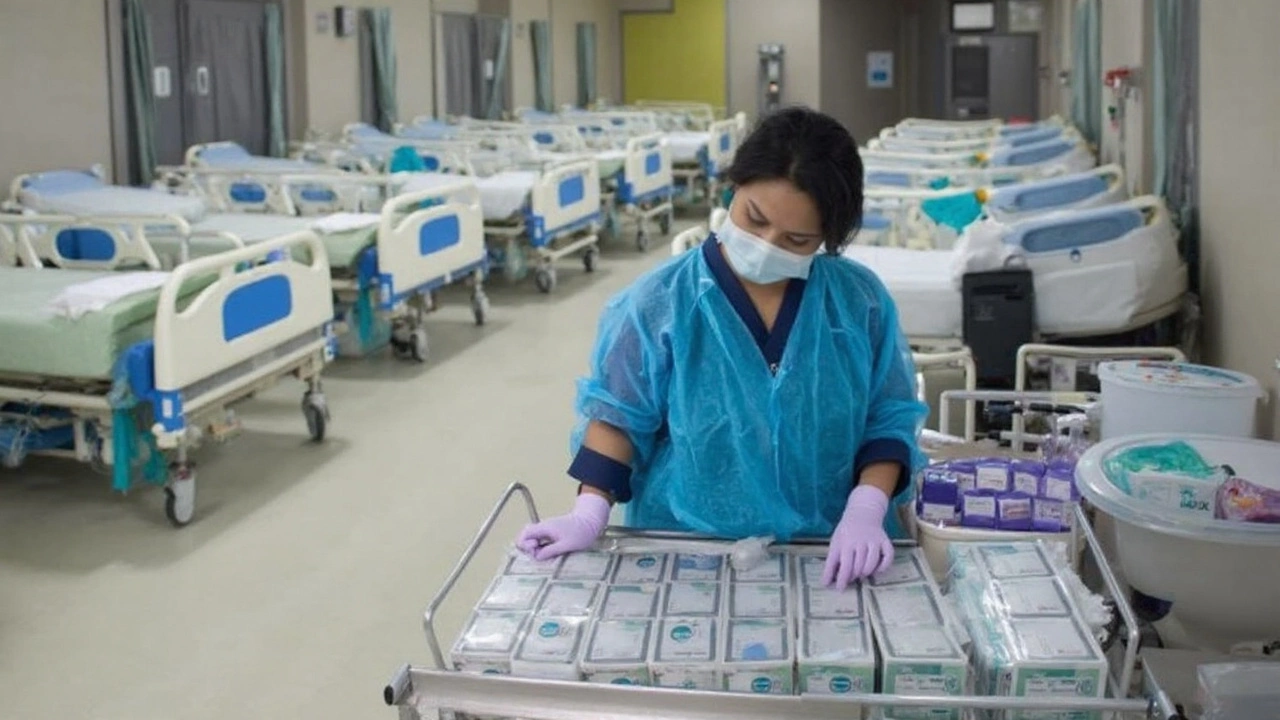The number that jumps out in 2025: $43.51 billion. That’s the size of the global medical tourism market this year, and it’s not a fad anymore. It’s a full-blown system that blends price, precision, and spa-level recovery in ways big hospital networks at home still struggle to match. What used to be a niche for elective procedures is now a serious option for cardiac patients, people facing long waitlists, and anyone who wants bundled care with clear pricing and quick scheduling.
Seven destinations have pulled ahead—Thailand, India, South Korea, Turkey, Mexico, Germany, and Costa Rica—each for a different reason. Some win on cost. Others on technology. A few on the way they fuse treatment with wellness and recovery. Together, they’re redrawing the map of where patients go for complex care, routine dentistry, and everything in between.
Who’s leading—and why
Thailand: affordability meets wellness. Thailand has turned hospital stays into hospitality experiences without cutting corners on clinical standards. Private hospitals in Bangkok, Phuket, and Chiang Mai run like clockwork, with English-speaking teams and clear procedure packages. Cosmetic surgery, dental implants, joint replacements, fertility care, and general surgery dominate the caseload—often at 50–75% less than prices in the U.S. or Western Europe. Recovery is woven into the plan: executive health checkups pair with spa therapies, nutrition consults, and stress testing designed to catch problems early.
Bangkok’s pharmaceutical push matters too. A 2025 initiative by the Government Pharmaceutical Organization is scaling generics for novel hepatitis C and diabetes therapies, slashing prices by up to 70% versus U.S. tags. A sofosbuvir-based course priced around $1,000 in Thailand has been a wake-up call for payers—and for patients balancing efficacy, access, and cost. That mix of prevention, price transparency, and gentle recovery keeps Thailand at the top.
India: big system, big savings. India’s pitch is straightforward: world-class specialists, modern infrastructure, and savings that can approach 78% compared with Western bills. The hubs—Delhi, Mumbai, Chennai, and Bangalore—pack in JCI-accredited hospitals, robotic surgery suites, and 24/7 international desks. Cardiac bypasses and valve work, knee and hip replacements, complex oncology, dental restoration, cosmetic procedures, and IVF are all common requests. The care pathways are usually fast: imaging and specialist consults happen within days, not months.
Two more things tilt the table in India’s favor. First, the ecosystem around the hospitals—teleconsultation startups, e-pharmacies, digital second opinions—helps patients plan from abroad and continue follow-up at home. Second, the medical e-visa system, including dedicated categories for attendants, makes entry simpler. For overseas patients, that blend of paperwork predictability and clinical depth counts as much as price.
South Korea: precision and polish. South Korea’s hospitals look and feel like the future: AI-supported diagnostics, robotic surgery, and preventive checkups that plug into digital health records. The country is best known for cosmetic and reconstructive surgery and dermatology, but its cancer programs and minimally invasive procedures are drawing a growing share of international patients. Savings are typically 30–55% versus U.S. prices, but the bigger draw is accuracy—shorter anesthesia times, tight infection control, and meticulous aftercare.
Preventive health is where Korea is rewriting the playbook. Executive programs now package whole-body imaging, liquid biopsies, cardiac CT, and metabolic profiling into one-day or two-day pipelines, with algorithmic triage that flags risks early. For patients who want certainty and speed, that’s hard to ignore.
Turkey: the bridge that became a hub. Turkey’s location—four hours by air to much of Europe, the Middle East, and North Africa—gives it an edge. But the country has turned that advantage into real scale. Hair transplants, ophthalmology procedures like LASIK and cataract surgery, cosmetic operations, and dental work anchor the business, backed by EU-aligned protocols and aggressive government support. Savings in the 50–70% range are typical, and Istanbul has built an ecosystem of recovery hotels, multilingual care coordinators, and bundled pricing that appeals to patients who want everything set before they fly.
Turkey sits in a rare club: a top destination for both leisure tourism and medical care. That means better flight options, smoother airport transfers, and service standards that carry over from the hospitality sector into healthcare logistics.
Mexico: cross-border convenience. For Americans and Canadians, Mexico’s advantage starts with geography. Patients can drive or take a short flight for dentistry, bariatric surgery, orthopedic procedures, and fertility care, shaving 40–65% off typical U.S. prices. Border cities and major destinations like the Yucatán Peninsula have built specialized clinics with quick scheduling, plus hotel-and-transfer bundles that make a two- or three-day trip realistic even for busy professionals.
The regulatory framework has tightened in recent years, improving oversight and outcomes reporting. Shorter wait times are a selling point, but so is proximity: if a follow-up is needed, patients can return without crossing multiple time zones.
Germany: precision medicine and early detection. Germany remains the go-to for people who want top-tier diagnostics and complex interventions with an emphasis on precision. Oncology and cardiology programs lean on molecular testing, PET-CT, and image-guided procedures. Preventive packages often include genetic counseling and risk profiling that lead to tailored screening plans. It’s not the cheapest option, but for high-net-worth patients and corporate executives, the promise is simple: find problems early, treat them decisively, and document outcomes.
German clinics also coordinate tightly with home-country physicians, a detail that matters for continuity—especially in oncology, where treatment cycles and follow-up monitoring stretch over months.
Costa Rica: wellness wrapped around care. Costa Rica has quietly built a strong following for dental restorations, cosmetic surgery, and orthopedic procedures, with savings often in the 40–60% range compared with the U.S. What makes it stand out is the recovery environment: mountain and coastal retreats designed for low-stress rehabilitation, plus integrative wellness add-ons like nutrition consults and physical therapy embedded into care plans.
San José serves as the clinical hub, with English-speaking teams and outcomes-focused packages. For North American patients who want a calmer, nature-forward setting after treatment—without long flights—Costa Rica is moving up the list fast.
- Typical savings versus U.S. pricing: Thailand (50–75%), India (up to 78%), Turkey (50–70%), Mexico (40–65%), South Korea (30–55%), Costa Rica (40–60%). Germany focuses on precision and preventive diagnostics rather than deep discounts.
Other markets are adding pressure. The UAE is courting high-acuity cases with luxury facilities; Singapore and Malaysia continue to compete on clean care pathways and English-language support. But the seven leaders above cover most patient priorities today: cost, speed, tech, and recovery.
What this means for patients and providers
The surge has clear drivers. Healthcare inflation in developed markets keeps outpacing wages. Waitlists for orthopedic and cardiac procedures are stretching longer. And diagnostics that once required weeks can now be bundled into a day. Put that together, and traveling for treatment goes from exotic to practical.
What changes at the bedside? Bundled care and outcome guarantees are becoming normal. Patients expect upfront quotes that include imaging, anesthesia, hospital days, implants, medications, and aftercare. Providers are responding with package codes, case managers, and warranties on implants or revisions for a defined period. It feels more like a managed service than a series of invoices.
Pharma access is another shift. Thailand’s generics strategy for hepatitis C and diabetes aligns with a broader trend: faster access to biosimilars and affordable equivalents. For self-pay patients, drug pricing can tilt the decision as much as surgeon reputation. Expect more destinations to publish transparent drug formularies and offer bundled pricing for full treatment cycles, not just procedures.
Technology is quietly solving friction points. Pre-op consults happen over secure video. Imaging is uploaded to cloud portals so surgeons can plan before you fly. Wearables track vitals during recovery, feeding data back to the operating team. AI triage tools are creeping into preventive checkups, especially in Korea and Germany, flagging risks that might otherwise go unnoticed.
Risks haven’t vanished, and good providers are upfront about them. Patients should look past glossy brochures and ask basic, practical questions:
- Accreditation and outcomes: Is the hospital accredited, and will it share infection rates, readmission rates, and revision rates for the exact procedure?
- Surgeon experience: How many of these operations has the lead surgeon done in the past year? Who handles complications?
- Scope of the package: What’s covered—meds, implants, ICU, extra days, and transfers? What triggers additional charges?
- Follow-up plan: Who manages stitches, physio, and medication adjustments once you’re home? Is there a remote consult schedule?
- Medical visa and insurance: What visa is required? Will your insurer reimburse any part of the cost or cover complications?
- Language and documentation: Are reports and imaging delivered in English, with clear discharge summaries for your home doctor?
For providers, the playbook is shifting from marketing to measurable quality. The leaders are publishing standardized outcomes, building cross-border referral ties, and investing in recovery environments that actually help patients heal. That includes practical touches—quiet rooms, sleep protocols, nutrition plans—that reduce complications and get people home sooner.
Expect the next phase to be more integrated. Insurers are piloting cross-border care for high-cost procedures with vetted hospitals in India, Thailand, Turkey, and Mexico. Corporate wellness programs are bundling annual screenings in Germany and South Korea for executives. And digital follow-up—remote physical therapy, wound checks via video, medication titration—is becoming routine, reducing the anxiety of going abroad.
The result is a two-lane market: value-led destinations that compress costs without sacrificing safety, and tech-and-precision leaders that minimize uncertainty for complex cases. Thailand and India anchor the first lane. Germany and South Korea anchor the second. Turkey and Mexico straddle both with logistics strength and broad procedure menus. Costa Rica leans into wellness and low-stress recovery, which matters more than people admit.
What ties it all together is predictability. Patients want clearer pricing, shorter waits, and a recovery plan they can stick to. The seven standouts are delivering that in different ways—through cheaper drugs, AI diagnostics, bundled care, or nature-centered rehab. As the numbers rise, expect the standards to rise with them.

